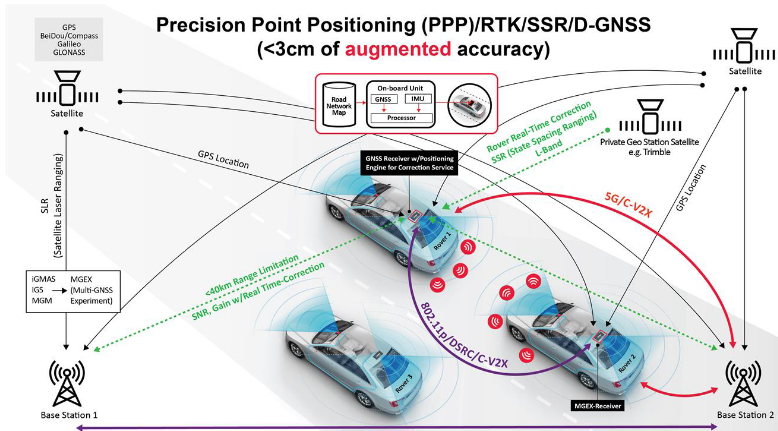The main focus of recent interest in the area of ‘Connected and Autonomous Vehicles’ has been autonomy – driverless cars – where both tech companies and auto manufacturers are attempting to get the technology to the point where it could be used on real roads. In contrast, while the idea of connected vehicles has been around for some years, progress has been slow. There are two kinds of connectedness: vehicle-to-vehicle (V2V) and vehicle-to-infrastructure (V2I); collectively V2X. A recent US webinar and report provided some illumination.
The main motivation of V2X is to improve safety, a real issue in the US where more than 6000 pedestrians a year are killed in traffic-related incidents. The aim is to enhance visual line of sight communication by using other parts of the electromagnetic spectrum.
There are two means of connectivity: WiFi based on a dedicated short-range communications (DSRC) standard approved in 2010 but with little implementation by manufacturers; and a cellular connection (C-V2X), based on smartphone technology, which could connect vehicles directly, independent of the base stations used for normal voice calls. Initially, 4G technology is being used, with the intention to move to the much faster 5G as that is rolled out. The hope is that vehicles will also be able to sense the presence of pedestrians by detecting their smartphones. The V2I capability depends on road authorities being willing to install connectivity in traffic signals and other roadside signs, which they may be reluctant to afford.
Deployment of V2X depends on whether this is mandated by national authorities. The Chinse government is supporting C-V2X. On the other hand, EU states voted against a proposal of the European Commission to adopt a WiFi standard, and the US government has also not supported a similar approach. In the absence of a policy mandate, deployment depends on consumer demand. The VW Golf launched in 2019 has WiFi V2X connectivity. Ford is planning to introduce C-V2X in 2022.
However, consumer interest and willingness to pay for a range of driver assistance and connectivity technologies has remained lukewarm for several years, with substantial levels of ambivalence and even scepticism towards these offerings. Enhanced safety, while desirable, may be insufficient a selling point. And having two technologies in use will not help.
Apart from safety, the other potential use of V2X connectedness would be to increase effective road capacity by permitting shorter headways between autonomous vehicles. This benefit depends on the implementation of robot-driven vehicles with faster reaction times than human drivers. Shorter headways would increase the risk of crashes. Crashes involving autonomous vehicles require allocating responsibilities for fault, more difficult where V2V communication is involved between vehicles of different make under different ownership. Moreover, the benefit from increased road capacity accrues to road authorities more than to road users, so the commercial incentive to develop V2V for this purpose seems quite limited.
Altogether, the case for developing vehicles connectedness does not seem strong.

